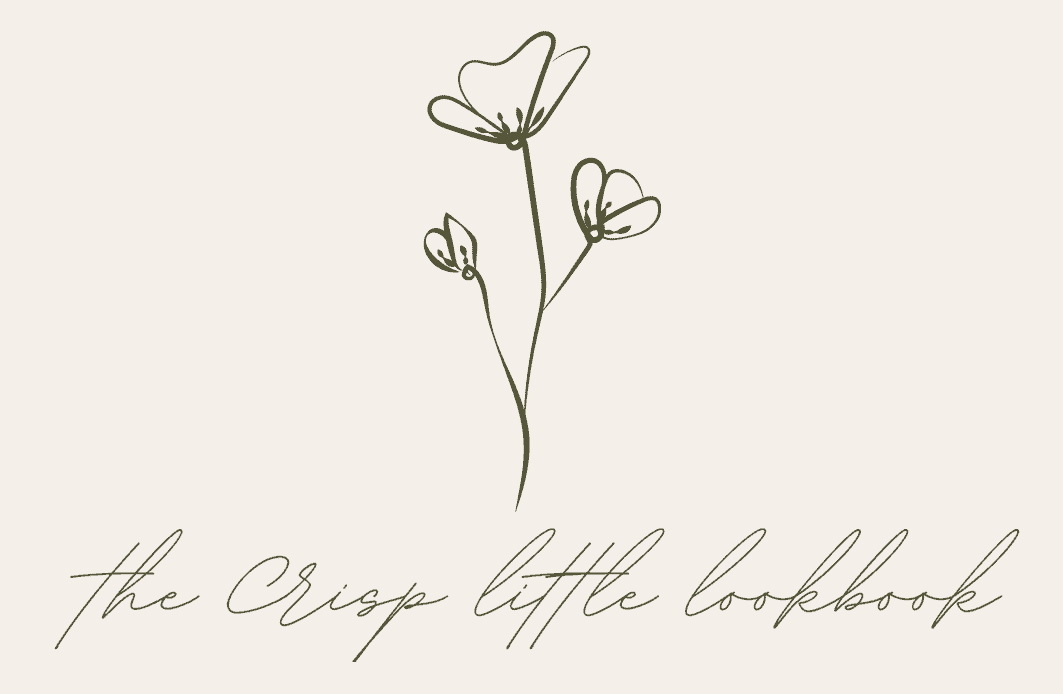
Would it shock you to know that 52% of children in the United States read below their grade level? Although it may be shocking, when you consider the state of public education in the U.S., it sadly is not surprising. The problems with our education system are numerous and growing and, contrary to claims by the most vocal advocates, more money is not the solution because a lack of investment is not one of the problems.
From 2005-2015, the United States spent $12,300 per student each year, making the United States the second-highest spender among the other Organization for Economic Cooperation and Development (OECD) nations. We fell behind only Finland, which spent $12,600 during the same period. Despite that investment, in 2012 the Programme for International Student Assessment reported that the U.S. ranked 17th in math, 21st in science, and 17th in reading among the 34 OECD countries. There are numerous problems with our education system, but lack of investment is clearly not one of them. So, what is a parent to do? Admittedly, many of the problems rest outside individual control. But there is something you can do, right now, to improve your child’s chance of success: simply commit to taking an active role in your child’s education.
One quick note: I realize that many parents are facing challenging circumstances. In some cases both parents work full-time and simply don’t have the time, energy, or bandwidth to spend hours each day educating their children. Many children live in single-parent homes with either mom or dad working day and night just to keep their family afloat. I understand and appreciate these limitations and in no way should this post be taken as a criticism of your family’s choices or circumstances. I now many of you are doing the absolute best you can. I hope you will approach this post as a general guide for how to make the most of whatever time you have.
Why Have We Outsourced the Education of our Children?
One of the most striking developments over the last century is how we willingly outsource much of our childrens’ education and character development to others. It wasn’t always this way and the results suggest that we may need to reconsider this approach. Our children may be the most schooled generation in our nation’s history, but they are far from the most educated. Children today shuffle into schools for 7-8 hours/day and listen to a litany of information, are urged to remember it and simply regurgitate it back. Worse yet, much of this information is ideological in nature, and not informed by any reasoned, fact-based analysis. In short, we have begun to teach our children what to think rather than how to think. We also no longer value the pursuit of knowledge, which is a life-long journey of educating oneself for the purpose of seeking objective truth. Instead, our schools and our culture urge individuals to “seek your truth”, as if truth is some subjective thing that shifts and changes from one person’s feelings and perspective to the next. Whatever is taught in this environment is not education, it’s indoctrination into a cultural environment that values moral relativism and secular humanism over the virtues of truth, beauty, and goodness.
But none of this was particularly surprising to me when I set out to identify the best ways to educate my children. One must pay only slight attention to the cultural decay surrounding him to realize that moral relativism is wreaking havoc on our society, and I didn’t expect much different from our public-school system. One thing I did notice that was rather surprising is the way in which our education system, from start to finish, dramatically underestimates the capabilities of our children. After reading through various sources, I was dumbfounded to learn that the basic skills expected of a child entering kindergarten are to recognize some alphabet letters and sounds, be able to count to 10, to know how to grip a pencil, and to be able to write one’s name. If this is all we expect of our children upon entering kindergarten, it is no wonder we are ranked in the middle of our peers in the OECD despite spending more money per student than all but one of them. Our children are capable of more and they deserve better. It is up to you — their parent — to give them the best chance they have at success.
So, why is it that, despite the many problems we see with our education system, we continue to rely on someone else to educate our children? The answer, I believe, is rather simple. Over the last 50-60 years, as government has grown, encroaching into every area of our lives, many parents have taken a backseat approach to their childrens’ education. Reliance on government has increased and parents are now conditioned to rely on “educational professionals” for some of the most important work they’ll do as parents: educating their children. Parents send them off to public school without a second thought, entrusting them to a cadre of “educational experts”. This reliance has led us to forget that educating our children is, whether or not they attend school, first and foremost, a parent’s responsibility.
The Modern Education System
Before we dive into how you can reassert yourself as the primary teacher for your child, I think a quick overview of modern education is helpful so parents can fully understand what these “professionals” and “experts” are teaching (or, more importantly, not teaching) our children. Most parents have largely abandoned the responsibility of educating their own children, not because they do not care but, because they remain largely in the dark about public school curricula, and they fail to realize how closely linked their child’s education is to his or her cultural and moral development.
During the 20th century there was a radical shift in what and how we teach our children. If you expect your child will be given systematic instruction in reading and arithmetic, you’ll be disappointed. If you expect your child will be taught an ideologically neutral, fact-based version of history and science, you’d be mistaken. If you expect your child will receive guidance on character formation and virtue think again. Most importantly, if you expect your child will be taught these subjects with the goal of increasing their knowledge — the ability to determine fact from fiction and apply critical thinking skills for the purpose of seeking objective truth — you will be disappointed.
Without History, Morality is Dead
Nowhere are these deficiencies more pronounced than in our school’s history courses. At one point, history was taught chronologically, permitting students to grapple with the oftentimes tragic reality of human nature. Students were confronted with the harshness of life outside their immediate circumstances and were encouraged to identify and aspire to the virtues that have allowed human beings to overcome their fallen nature and flourish over the centuries. Understanding the span of human history also inculcated students with a sense of perspective and gratitude. In our modern education system, history is taught under a scattershot, piecemeal approach, with educators spending an oddly inordinate amount of time on current events, which are often skewed by the teacher’s ideological leanings. Truth seeking through the application of reason to facts has been replaced with one’s feelings, opinions, and ideological pronouncements. Without a thorough examination of human history, including both our tragedies and triumphs, students learn in a detached, mechanical manner without any regard to fundamental truths about human nature or objective morality. They are taught all values are relative and they have little understanding of human history or their place and purpose in the world. Their minds are crammed with endless reams of information, but little to no effort is made to teach them how to use that information or to understand why that information is important or what it reveals about the human experience.
From a cultural perspective, this presents a rather terrifying reality. If there is no objective truth, no fixed standard for moral obligations, and all values are merely relative, then there are no limitations on our behavior other than what we choose to impose on ourselves. C.S. Lewis discussed this issue at length in his book The Abolition of Man. Without objective standards, those in power determine what form of morality to impose on the powerless. Under this system, the thirst for power becomes insatiable. In fact, power is the only thing that matters because those who possess it define for all under their authority the most fundamental aspects of what it means to be human.
In this environment, is it any wonder so many Americans under age 35 openly support socialism, a form of government responsible for the death of roughly 100 million people in the 20th century? Without objective moral truth, why are we surprised when wall street executives engage in fraud to enrich themselves at the expense of shareholders, casual sex is sold to women as “empowering”, and abortion is no longer considered a tragedy but is instead marketed as something to be shouted loud and proud? Without a sense of meaning or divine purpose, should we be shocked that depression, substance abuse, and suicide rates are increasing at an alarming rate? If there are no objective virtues to which we can aspire and we have no objective moral obligations, how can we possibly expect human beings to behave in a moral and virtuous manner? We can’t, and our children, if educated within today’s modern education system, will not ever be given the chance.
Whatever They’re Teaching, It’s Not Reading
The modern approach to reading and arithmetic is no better. Gone are two of the most important principles of learning: understanding and application. In preparing our eldest daughter for kindergarten (before I had done much research), I enrolled her in a well-advertised math and reading program. At first, it seemed to be going well. But the more material we covered and as we started to move beyond basic letter recognition and approach actual reading, it became clear this company’s method has some serious flaws. I’m not an educator nor am I an expert, but I immediately recognized their method uses a pronounced over-reliance on pictures and repetition. Our daughter was not actually learning to read, she was simply using a variety of visual cues to “guess” the words. I withdrew from the program and purchased a phonics-based reading guide (which I’ll cover below). Within two weeks of instruction, she was reading simple words on black and white paper with no pictures and no visual cues. She relied solely on the 26 letters of the alphabet, the sounds of which she had mastered.
After conducting additional research on reading instruction in schools, I learned why this company’s materials were so heavily reliant upon repetition and visual cues. I discovered many schools use what is known as “balanced literacy”. This approach arose as a compromise between phonics advocates and “whole language” advocates. The whole language approach teaches children to read whole words rather than decode words by learning the letter components of language. In theory, if the student is presented with a word and accompanying visual cues (such as a picture) frequently enough, they will simply recall the word in its entirety. Unfortunately, many children, particularly those with a limited vocabulary, were reduced to guessing words based on pictures and other visual cues. As these problems became more apparent, educators shifted to the “balanced literacy” approach, which still relies on some aspects of the whole language theory, but also draws upon traditional phonics instruction. The trouble is, this compromise is not yet clearly defined nor is it consistent across schools. Additionally, there still seems to be a persistent reliance on visual cues. As a layperson, I’m not qualified to delve into educational methods and theories. My own experience with our daughter was enough to convince me that children deserve systematic phonics instruction. Other methods may be incorporated in a supplemental fashion, but the core of any reading curriculum for my children will be phonics. Even a layman can see that a phonics program is the only form of instruction that will permit a child to confidently approach new words without falling back on visual or other contextual cues. If a child simply memorizes whole words, what will the child do when he or she encounters a word never seen before? What if there are no visual aids? This child will be left without any means to figure out the word on his or her own. A comprehensive phonics program is the toolbox every student should have to prepare them to tackle any word they encounter. Sadly, many children are denied these fundamental tools.
The math preparation at this organization was no different. There were weeks of looking at numbers, repeating numbers, and counting numbers. With all the work our daughter completed it would have been natural for me to simply assume she was making excellent progress. But one day I asked her to read a number we came across in isolation. The number was 17. I thought this would be a piece of cake. After all, she could count to 100, rattling off the numbers at rapid-fire pace. And when presented with the number 17 in order, sandwiched between 18 and 19, she read it off like clockwork. But seeing that small, simple number on its own, without any other numbers or pictures as cues, she was lost. So, I got to work. I created flashcards numbered 1-100, placed them both in order and out of order, and reviewed them with her about four days/week. There were tears and frustration, but we kept at it, consistently and at a reasonable pace. Within two to three weeks she could read any number, 1-100, whether on its own or presented alongside its chronological peers. Our daughter will turn five in July, and we have already moved on to basic addition, and will begin subtraction within the coming weeks.
The obvious lesson here is that focusing on memorization and regurgitation does not teach one’s mind how to think. Memorization is indeed important, particularly at a young age. In fact, it’s one of the key methods of learning in the early years (1st – 4th grade) of a classical education. However, rote memorization should never be used as a crutch to avoid understanding. Without understanding, a child is merely given a false sense of security about his learning progress, only to discover that when presented with a situation outside the choreographed bubble in which he was “taught”, he realizes he is lost.
Classical vs. Modern Education, A Vision from C.S. Lewis by Stephen R. Turley, Ph.D, provides an excellent overview of the theoretical differences between a classical education and modern education, with a particular emphasis on how modern education has had a profound and troubling impact on our culture.
Given the State of Modern Education, What Can Parents to Do?
Now that we have explored the theoretical issues surrounding modern education, lets discuss what practical steps you can take, as a parent, to ensure your child receives a well-rounded education. Given the dissatisfaction with our public education system, many individuals and organizations have taken matters into their own hands, creating home-school curricula, opening classical education schools, and providing after-school supplementary programs. There is a wealth of options available to parents, whether you’re interested in homeschooling or would simply prefer to supplement your child’s public education with classical material.
The book that changed my entire perspective on education, and what largely led me to determine a classical education is the only education I’ll pursue for my children is The Well Trained Mind: A Guide to Classical Education at Home, by Susan Wise Bauer and Jessie Wise. After a brief introduction explaining the basic theory of classical education, this book provides a complete guide for teaching preschool through high school using a classical education curriculum. It is jam-packed with resources for every subject at every level of study, including teaching guidance, outlines, suggested schedules, weekly checklists, organization tips, and an impressive list of recommended books, programs, learning aids, and other resources. Do not be dissuaded from using this book if homeschooling is not an option for your family. The authors recognize that homeschooling is only one method of teaching a classical education curriculum and they provide resources that can be used to supplement the education of a child who is already attending school.
If you have small children (pre-K) or younger, start the education process now. Get your hands on a quality phonics program and teach them to read as soon as possible. I am using The Ordinary Parent’s Guide to Teaching Reading, by Jessie Wise and Sarah Buffington, and it is excellent. Knowing when your child is ready to begin reading is discussed in The Well-Trained Mind, but the most telling sign is when your child recognizes that letters and words are symbols meant to communicate something. Both of my daughters began asking, “mommy, what does that sign say?” If your child shows interest in signs or other written words, they’re most likely ready to begin a reading program.
Also start teaching your young children numbers and counting as early as possible. Once they have mastered numbers 1-100 (can count to 100 and recognize random numbers in isolation), start counting by multiples of 2, 4, 5, 10, etc. Once they’re comfortable counting in multiples, introduce basic addition. There are various curricula available, and several are highlighted in The Well-Trained Mind. We selected Singapore Mathematics because of its focus on teaching the reasoning and process of solving mathematical problems. Unlike some programs that, again, emphasize rote memorization, Singapore Mathematics teaches young minds how to reason through problems. In the beginning, the use of manipulatives such as blocks or an abacus is incredibly helpful for teaching the concepts behind addition and subtraction.
Introduce practical life lessons like counting money and learning the months, days, and years of the calendar. Turn your trip to the grocery store into a math or reading lesson. Count how many apples or bananas you decide to purchase. Ask your child to read simple signs or product prices. Weigh your produce and have your child assist in determining the weight. These are just a few examples, but the possibilities for practical life lessons are available in almost everything you do — you just have to commit to taking the time to teach during these otherwise routine, mundane tasks.
The key takeaway for parents of young children is do not wait. Experts will encourage you to read to your children at an early age. This is sound advice of course, but an unorganized and inconsistent approach of choosing random books on a whim and reading them some days and not others is insufficient. If you hope to have your child reading and understanding mathematical concepts as early as possible, you must be thoughtful, organized, and consistent. There is nothing wrong with randomly choosing books that suit your child’s fancy, but this should be categorized as “free reading time” and is not a substitute for a comprehensive, focused reading program.
For older children, the most important thing I can suggest is to simply be involved. Request a copy of the school’s curriculum, and if something concerns you raise it with the school administrator. At the very least, knowing that your child is being taught questionable topics gives you the opportunity to discuss those lessons with your child to provide context, clarity, and an alternative viewpoint. There are also numerous resources and curricula you can purchase to supplement the education of your child if they are already attending a public school. The Well-Trained Mind contains a section devoted to parents who choose to supplement their child’s public-school education and throughout the book the authors direct you to resources included for that purpose.
Finally, no matter your children’s ages, read to them or with them as frequently as possible. Read the Bible, classics of literature, fairy tales, history books, and poetry. Read books that teach your children the elegance of the English language and the beauty and harshness of the human condition. Read books that highlight good and evil and stories that help them understand their place and purpose in the world. These are critical lessons they will not learn in public school, but can and should absolutely learn from you, their parent. This book list for children age three to seven by Joy Pullmann is a great place to start. For older children (middle school and high school), The Well-Trained Mind contains various book lists as well.
Resources
Since the resources contained in The Well Trained Mind are extensive, I won’t bore you with too many additional resources here, other than to briefly discuss the curricula and resources that I have personally used for my children. Below is a brief summary of our curriculum, loosely based off of the Preschool and Pre-K curricula from Memoria Press, and complimented with a variety of separate resources I chose to use as supplements. One word of caution: if I were to purchase through Memoria Press again, I would likely choose one grade level higher, particularly for my older daughter who began the Pre-K program at age four-and-a-half. So, in our case, rather than selecting the Pre-K program, I would order the First Grade curriculum.
- Memoria Press Classical Core Curriculum, Preschool and Pre-Kindergarten. This curriculum requires reading from a variety of classic chidren’s books. Memoria Press gives the option of purchasing these books with their curriculum guide, or purchasing only the guide. I purchased the guide alone and purchased the individual titles separately on Amazon (and saved roughly 30% off the Memoria Press package price). Olivia was far beyond her grade level for this curriculum in the reading and math portions, so I chose to supplement with additional resources (below). We focus our attention on the biblical teachings, literature, and poetry portions of the curriculum.
- Singapore Primary Mathematics Level 1 Kit: As I discussed above, we chose this math program because it aims to teach your child how to reason through mathematical concepts. I carefully removed the pages from the book spine, inserted each page into a page cover and placed them all in binder. This way, they can be used repeatedly with a dry-erase marker.
- The Parent’s Ordinary Guide to Teaching Reading: This is a phonics-based reading program containing 230 lessons, beginning with the sounds of individual letters and progressing all the way to homonyms, homophones, homographs, and multi-syllable words such as extraterrestrial, exaggerated, mathematician, and hippopotamus. Olivia already knew the sounds of all the alphabet letters when we began his program, so we started with Section 3, Short-Vowel Words.
- The Story of the World: History for the Classical Child, Volume 1: Ancient Times: From the Earliest Nomads to the Last Roman Emperor and accompanying Activity Book
- A Child’s Garden of Verses: We read this book for poetry. My girls don’t fully understand all the poems, but they’re short and beautifully written. And the earlier you introduce your children to poetry the more apt they are to appreciate it as they get older. Poetry is difficult, so chances are no child, regardless of age, will willingly flock to it. But if you introduce it early as something that you read regularly, they will learn to appreciate it and it will feel more natural reading it as they get older and it becomes mandatory reading at school or in a homeschool curriculum.
- My Very First Bible and Prayers : In addition to reading Bible stories regularly, I also select a bible verse and prayer each month to recite and memorize. This book does a fantastic job of telling the key Bible stories in a way children can understand, and the second half contains a variety of beautiful prayers.
- Kumon Thinking Skills Workbook Set: These are great for independent use. I also placed these in page covers for repeated use.
- Kodaly in Kindergarten: 50 Lesson Plans, Curriculum, Song Collection: I chose to start Olivia in violin at four-and-a-half, and I wish I had started earlier. Emme will likely start either violin or guitar this summer, not long after her third birthday. Children who received musical instruction as part of their education outperform their peers who did not receive similar instruction, and there is a growing body of research confirming the power of music in further facilitating learning in all subjects. If you do not have the time or budget to give your child lessons in a musical instrument, this curriculum is a great alternative. Another resource, used by Olivia’s violin teacher, and which I now use at home with both Olivia and Emme, is this series of cup exercises. It’s available for purchase and immediate download, and both my girls love it!
- 50 Great Object Lessons That Bring the Bible to Life: This book contains a variety of crafts and activities used to teach biblical truths, and most of them use household items that you likely already have on hand, so the prep time is minimal.
- Maps of the World: An Illustrated Children’s Atlas of Adventure, Culture, and Discovery: Our eldest daughter has shown a particular interest in maps and geography, so this book has been wonderful for introducing her to the various countries and continents. We even discuss where her favorite Disney characters would theoretically live!
- MathLink Builders & Abacus: We use these as manipulatives in counting and basic addition and subtraction problems.
- Letter Tiles: We use these for letter recognition & sounds, “writing” words, and other phonics exercises.
- Wall Calendar Chart: Introduce your children to the concepts of dates and time as early as possible. We update our calendar chart every morning, so my girls are learning about months, days, years, seasons, and weather, all in just a few minutes each day.















Leave a Reply